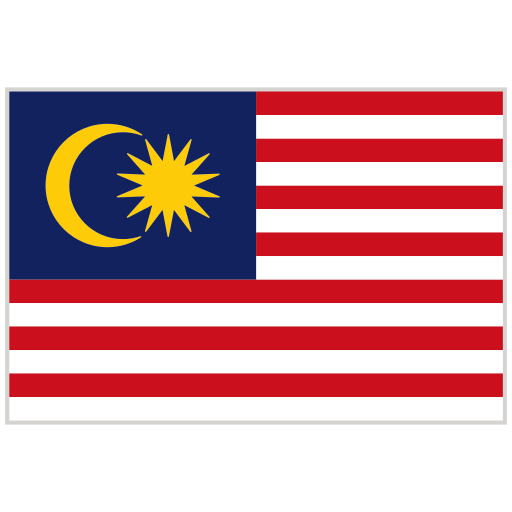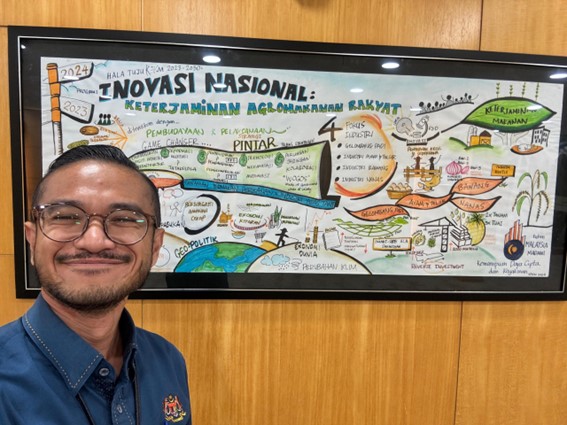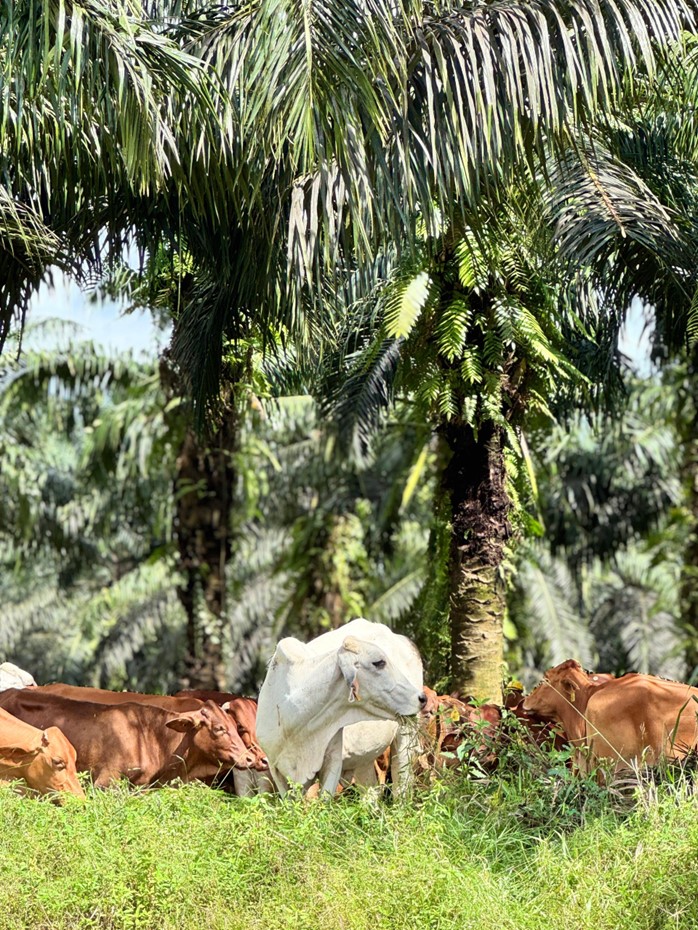Country profile

Region: Southeast Asia
Area :330,803km2(66th)
Population:34,706,198(43rd)
Major agricultural products: Oil palm, Rice, Poultry, Chicken egg
Festival dance
The training course
Sustainable Food System Strategy for Local Industry Development FY 2024
Name of participant: Hakim-san
Organization: The Ministry of Agriculture and Food Security
Activities after the training course ( As of Jan 2025)
- Drawing the vision picture of the ministry

The Vision Statement of the Ministry
“Leading the transformation processes in the agricultural sector in a planned, integrated, and comprehensive manner, based on the mobilization of the entire organization’s thinking and efforts towards achieving the goals of the National Agrofood Policy.”
After learning how to draw a vision picture in training, Hakim-san shared this initiative with his organization, and now everybody in the Ministry of Agriculture was contributing to producing a Vision Picture of the Ministry. “
A vision picture of an organization should not be drawn only by its representatives. It should be made by everybody in the organization.
Because a vision is the end result of an organization. It is not my vision,
our vision.

Project outline
- The pilot project (Sustainable Integrated Ruminant Farming in Palm Oil Plantation)
As a first step toward achieving the above vision, Hakim-san proposed one project: Sustainable Integrated Ruminant Farming in a Palm Oil Plantation.

In Malaysia, there are two challenges in the agricultural sector;
- There is no sufficient grassland for cattle breeding to meet the increasing demand for meat consumption in the domestic market. Due to this fact, livestock farming currently relies on imported feeds. The profitability is low because of the high cost of production, including the imported feed.
- Due to the above fact, the young generation is not interested in livestock farming.
- Environmental impact of increased oil palm plantation
To cope with the above issues, Hakim-san created a pilot project that grazing cattle on oil palm plantations.
This is a type of agroforestry. (Please refer to the previous article about agroforestry) We call it silvopasture. (In detail about silvopasture, please watch this video)
Sustainability of the project
1. Environmental aspect
This project tries to reduce the negative environmental impact of palm oil production and cattle breeding at the same time
2. Social aspect
If this silvopasture project increases profitability and reduces working time, the local young generation might be interested in this sustainable livestock farming and able to establish a regional circular economy.
3. Economic aspect
Reducing the cost of palm and cattle breeding production such as agrochemicals, labor, and machinery.
We should try to create this kind of project all over the world.
“Better management for a better world”.
